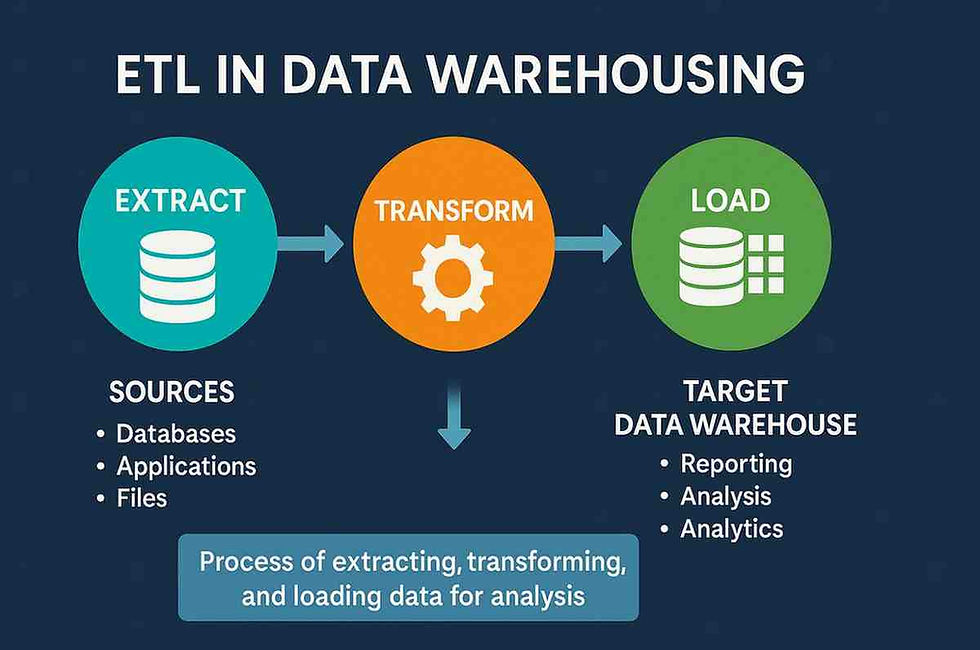Top 30 Manual Tester Interview Questions & Answers Guide (2025)
- Gunashree RS
- May 2
- 7 min read
Introduction to Manual Testing Interviews
Preparing for a manual testing interview can be overwhelming without proper guidance. Whether you're a fresher entering the testing field or an experienced professional looking to advance your career, knowing what to expect can make the difference between landing your dream job and continuing the search.
Manual testing remains an essential component of quality assurance despite the growing focus on automation. Companies value testers who can think critically, detect issues that automated tests might miss, and ensure software quality through a human perspective. This comprehensive guide covers the most commonly asked manual tester interview questions along with detailed, industry-relevant answers to help you demonstrate your expertise confidently.
By mastering these questions and understanding the underlying concepts, you'll be well-prepared to impress hiring managers and showcase your testing knowledge effectively. Let's dive into the key areas you should focus on before your next manual testing interview.

Fundamental Testing Concepts Questions
Interviewers typically begin with questions about basic testing concepts to assess your foundational knowledge. Here are the most common questions in this category:
What is Manual Testing and Why is it Important?
Answer: Manual testing is a process where testers manually execute test cases without using automation tools. A tester steps into the end user's shoes, following a written test plan to verify that the application functions as expected.
Its importance stems from several factors:
Enables exploratory testing that can uncover unexpected issues
Provides human intuition and observation that automation can't replicate
Allows for usability and user experience assessment
Requires no coding knowledge, making it accessible
Offers flexibility to test changing requirements quickly
Provides a foundation for understanding what to automate later
What is the Difference Between Verification and Validation?
Aspect | Verification | Validation |
Definition | "Are we building the product right?" | "Are we building the right product?" |
Focus | Checks documents, designs, code, and specifications | Checks the actual product/software |
Process Type | Static testing process | Dynamic testing process |
Timing | Occurs early in development | Occurs after verification |
Examples | Reviews, walkthroughs, inspections | Testing with actual execution |
Performed by | QA team, developers | Testing team, end-users |
Describe the Software Testing Life Cycle (STLC)
Answer: The Software Testing Life Cycle consists of six structured phases:
Requirement Analysis
Study requirements to identify testable features
Create RTM (Requirement Traceability Matrix)
Determine test scope and limitations
Test Planning
Prepare a test plan document
Estimate efforts and resources
Select the test environment and tools
Test Case Development
Create detailed test cases and test data
Review and baseline test cases
Create scripts for automation (if applicable)
Test Environment Setup
Prepare hardware and software requirements
Set up test environment configurations
Perform smoke testing of the environment
Test Execution
Execute tests as per the plan
Document test results and defects
Retest fixed defects and perform regression testing
Test Cycle Closure
Summarize testing activities and results
Document lessons learned
Prepare test metrics and reports
Test Documentation Questions
Effective documentation is crucial in manual testing. These questions assess your ability to create and maintain testing artifacts.
What Does a Good Test Case Include?
Answer: A well-written test case should include:
Test Case ID: A unique identifier
Test Case Title: Clear description of what is being tested
Test Objective: Purpose of the test
Preconditions: Required setup before test execution
Test Steps: Detailed, sequential actions to perform
Expected Results: Anticipated outcome for each step
Test Data: Specific input values required
Post-conditions: System state after test execution
Priority/Severity: Importance level of the test
Pass/Fail Status: Result of the test execution
Example Test Case:
Test Case ID: TC_Login_001
Title: Verify login with valid credentials
Objective: To validate that authorized users can login successfully
Preconditions: User account exists in the system
Test Steps:
1. Navigate to the login page
2. Enter a valid username
3. Enter a valid password
4. Click the Login button
Expected Results: User is logged in and redirected to the dashboard
Test Data: Username=validuser, Password=valid123
Post-conditions: User is authenticated, and a session is created
Priority: HighWhat Should Be Included in a Defect Report?
Answer: An effective defect report should contain:
Defect ID: Unique identifier
Summary: Brief description of the issue
Description: Detailed explanation of the problem
Steps to Reproduce: Sequential actions to recreate the issue
Expected Result: What should happen
Actual Result: What happened
Environment: OS, browser, device information
Screenshots/Videos: Visual evidence
Severity: Impact on system functionality
Priority: Urgency for fixing
Status: Current state (New, Open, Fixed, etc.)
Assigned To: Developer responsible for fixing
Testing Techniques and Methodologies Questions
These questions assess your knowledge of various testing approaches and methodologies.
Explain Different Types of Testing
Answer: Different types of testing serve various purposes in the software development lifecycle:
Functional Testing Types:
Smoke Testing: Basic tests to verify critical functionalities
Sanity Testing: Focused testing after bug fixes
Regression Testing: Ensures new changes don't break existing functionality
Integration Testing: Verifies interactions between integrated units
System Testing: Tests the complete, integrated system
User Acceptance Testing: Validates system meets business requirements
Non-Functional Testing Types:
Performance Testing: Evaluates system responsiveness and stability
Load Testing: Tests behavior under expected loads
Stress Testing: Tests beyond normal operational capacity
Security Testing: Identifies vulnerabilities in the system
Usability Testing: Evaluates user-friendliness
Compatibility Testing: Ensures the application works across environments
What is the Difference Between Smoke and Sanity Testing?
Answer: Although sometimes used interchangeably, smoke and sanity testing serve different purposes:
Smoke Testing:
Verifies the build is stable enough for further testing
Covers basic, critical functionalities
Wider coverage but less depth
The first test after a new build is released
Determines if the QA team should accept the build for testing
Sanity Testing:
Verifies that specific functionality works after changes
Focuses on particular areas affected by changes
Narrower coverage but more in-depth
Performed after smoke testing passes
Determines if a specific function is working as expected
Practical Testing Scenarios
Questions about real-world testing scenarios help interviewers assess your practical experience and problem-solving abilities.
How Would You Test a Login Page?
Answer: Testing a login page requires a comprehensive approach:
Functionality Testing:
Valid username/password combination login
Invalid username/password error messages
Password masking functionality
Remember me functionality
Password reset process
Account lockout after multiple failed attempts
Session timeout behavior
Logout functionality
Security Testing:
SQL injection prevention
Cross-site scripting (XSS) prevention
HTTPS implementation
Password encryption
Session cookie security
Brute force attack prevention
UI/Usability Testing:
Field validations (email format, required fields)
Error message clarity and positioning
Tab order between fields
Keyboard shortcuts (Tab, Enter)
Field length limitations
Responsive design on different devices
Performance Testing:
Login response time
Behavior under poor network conditions
Multiple simultaneous login attempts
Advanced Testing Concepts
These questions help distinguish experienced testers from beginners.
How Do Manual and Automated Testing Complement Each Other?
Answer: Manual and automated testing work best when used together strategically:
Manual Testing Strengths:
Exploratory testing and finding unexpected issues
Usability and user experience evaluation
One-time test cases are not worth automating
Complex scenarios requiring human judgment
Visual verification and subjective assessment
Automated Testing Strengths:
Repetitive regression testing
Data-driven testing with multiple inputs
Performance and load testing
Cross-browser/platform compatibility testing
Continuous integration/continuous deployment pipelines
Effective Integration:
Use manual testing for initial application understanding
Identify repetitive tests for automation
Use automation results to guide exploratory manual testing
Maintain both automated and manual test suites
Leverage each approach for its strengths
Conclusion: Manual Tester Interview Questions & Answers
Preparing thoroughly for manual testing interviews requires understanding both theoretical concepts and practical applications. By mastering the questions covered in this guide, you'll demonstrate your testing expertise and problem-solving abilities effectively to potential employers.
Remember that beyond technical knowledge, interviewers also assess your communication skills, analytical thinking, and passion for quality. Providing specific examples from your experience adds credibility to your answers and showcases your practical knowledge.
As you prepare for your interview, review these questions, practice your responses, and consider how your unique experience relates to each topic. With proper preparation, you'll approach your manual testing interview with confidence and increase your chances of landing that desired position.
Key Takeaways
Manual testing remains valuable for exploratory testing and user experience assessment.
Understanding the STLC demonstrates comprehensive knowledge of testing processes.
Well-structured test cases and defect reports are essential for effective testing.
Different testing types serve specific purposes throughout the development lifecycle.
Practical testing scenarios showcase your real-world problem-solving abilities.
The complementary relationship between manual and automated testing is important to understand
Communication skills and attention to detail are crucial qualities for manual testers.
Preparation with common interview questions builds confidence for your interview.
Frequently Asked Questions
What are the most important skills for a manual tester?
The most important skills include analytical thinking, attention to detail, communication skills, domain knowledge, documentation abilities, and understanding of the software development lifecycle. While technical knowledge is important, soft skills like patience, persistence, and curiosity are equally valuable.
How can I prepare for manual testing interviews as a fresher?
Focus on fundamental concepts like testing types, STLC, test case writing, and defect reporting. Practice with real-world examples like testing a login page or shopping cart. Consider getting ISTQB certification to demonstrate your commitment. Create a sample portfolio of test cases and documentation to showcase your skills.
What's the future of manual testing with increasing automation?
Manual testing will remain relevant despite automation growth. The future involves testers who can perform exploratory testing, usability testing, and ad-hoc testing while understanding automation principles. Manual testers are evolving into hybrid roles where they contribute to test automation strategy while performing critical manual testing activities.
How do I explain my testing experience in an interview?
Structure your explanation using the STAR method (Situation, Task, Action, Result). Describe the project context, your specific testing responsibilities, the approach and techniques you used, and the outcomes of your testing efforts. Quantify your
contributions when possible (e.g., "identified 45 critical defects before release").
What testing tools should manual testers be familiar with?
Even without coding knowledge, manual testers should be familiar with test management tools (TestRail, Zephyr), defect tracking systems (Jira, Bugzilla), and basic test automation concepts. Knowledge of SQL for database testing and tools like Postman for API testing can also be valuable advantages.
Sources
ISTQB. (2023). Foundation Level Syllabus. International Software Testing Qualifications Board.
Kaner, C., Bach, J., & Pettichord, B. (2022). Lessons Learned in Software Testing: A Context-Driven Approach. Wiley.
Black, R. (2024). Pragmatic Software Testing: Becoming an Effective and Efficient Test Professional. Wiley.
Patton, R. (2023). Software Testing: Principles and Practices. Sams Publishing.
Sharma, L. (2024). Manual Testing Interview Questions and Career Guide. Testing Excellence.




Link INDOVIP138
indovip138
indovip138
indovip138
indovip138
indovip138
indovip138
indovip138
indovip138
indovip138
indovip138
indovip138
indovip138
indovip138
indovip138
indovip138
indovip138
indovip138
indovip138
indovip138
indovip138
indovip138
indovip138
indovip138
indovip138
indovip138
indovip138
indovip138
indovip138
indovip138
indovip138
indovip138
indovip138
Cinsel sohbet odaları benzersiz yaklaşımı, düşünce liderlerinden yenilikçilere kadar yüksek başarı gösteren bireylerle bağlantı kurmanızı sağlar.
https://www.gevezeyeri.com/
https://ollama.com/Uyeliksiz-chat
https://ollama.com/Bedava-chat
https://ollama.com/Sohbet
https://ollama.com/Mobil-Sohbet
https://ollama.com/Sohbet-odalari
https://ollama.com/cinsel-sohbet
https://ollama.com/cinsel-chat
https://reach.link/cinsel-sohbet
https://reach.link/cinsel-sohbet
https://ollama.com/gabilesohbet
https://www.qfeast.com/cinselsohbet
https://gabile.mssg.me/
https://linklist.bio/gabile-sohbet
https://kisalink.bio/gabile-sohbet
https://dip.link/gabile-sohbet
https://zez.am/gabile-sohbet
https://linkpop.com/gabile-sohbet
https://bio.site/gabilechat
https://www.iglinks.io/ucretsizsohbet-nx0
https://biolink.website/gabile-sohbet
https://bibio.com.tr/gabile-sohbet
https://linkstap.com/gabile-sohbet
https://allmylinks.com/gabile-sohbet
https://biobar.link/gabilesohbet
https://mylinks.ai/gabile-sohbet